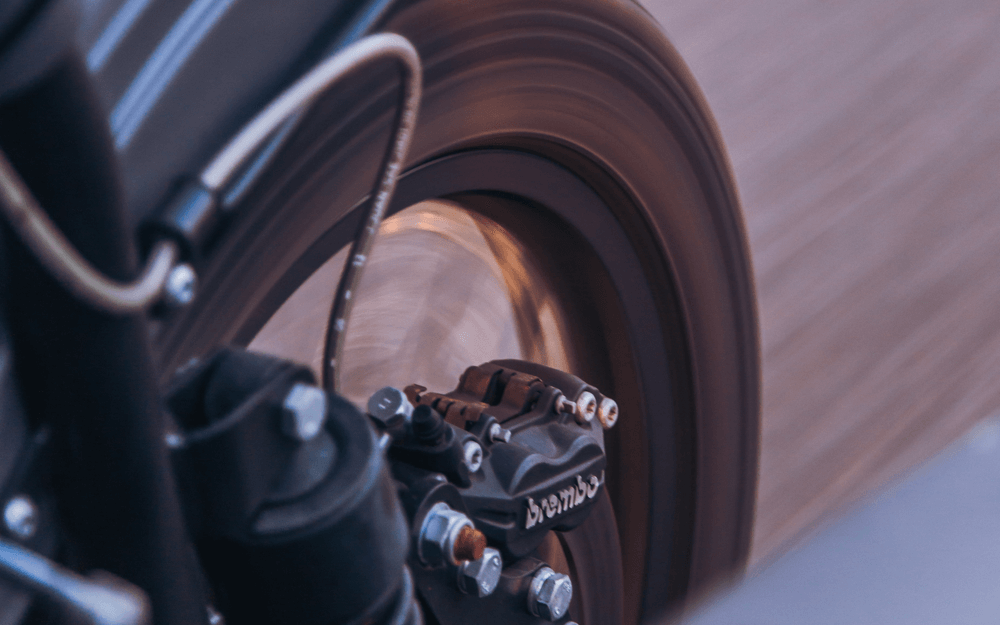
Investing in a motorcycle means you need more gear than if you drive a car, such as a helmet, gloves, pants and jacket. Your tyres are also vitally important for the safe and efficient running of your bike. This guide will help you to understand more about what makes motorcycle tyres special, and when you should replace your motorbikes tyres.
One of the main differences between motorcycle and automobile tyres is their shape. Car tyres have a flatter profile; as there are four tyres in contact with the road, increasing the amount of traction, and due to a lower centre of gravity, a car can more easily turn corners.
Motorcyclists, on the other hand, often need to lean into the corner by tilting the bike slightly to the side, as there are fewer tyres in contact with the ground, a higher centre of gravity, and a wider turning radius. If motorcycles had tyres with a flatter profile, their ability to corner properly would be lessened even more.
Therefore, motorcycle tyres will wear differently to car tyres. You’ll also notice that motorcycle tyres are made differently to car tyres, as the tread generally has fewer grooves, and those grooves are on the side rather than in the middle of the tyre.
The main purpose of the tread is to push water away and maintain traction with the road. If you ride your motorcycle often, the tyres will lose their tread quickly, and you will therefore have a higher risk of accidents. Even if your tyres are little used but are old, the rubber will harden, making it more difficult to retain control of the bike whilst riding, and more likely for the tyres to develop cracks.
At what age should you replace motorcycle tyres?
It is recommended that motorcycle tyres of five years old or more should be checked carefully for tread wear or cracks, even if they look okay. Helpfully, most motorcycle tyres have wear indicators on them; once the tyre has been worn down to the point where the tread is at the same height as the indicators, it’s time to replace the tyres. Most tyres will have a minimum tread depth of 1.5mm, and once this depth is reached, the tyre should be replaced – it’s also the law!
Motorcycle tyres can experience other issues such as uneven wear, known as cupping or scalloping, which can be caused by hard braking or the tyres being over- or underinflated. Once a tyre is showing signs of uneven wear, it is very difficult to remedy the situation.
How long do tyres last on a motorcycle?
How quickly your tyres wear out will depend on many factors, such as climate, riding and storage conditions, how often you ride, your riding style, and inflation pressure. How regularly you have your bike serviced will also depend on whether you are a daily rider or if you ride less frequently. If you ride every day, your bike is more likely to need a service every six months, at which point the tyres can be checked by a professional.
So, how often do you need to change tyres?
As there is no fixed timetable as to how often your motorcycle tyres should be changed, it will all depend on the factors above, as well as issues such as tyre damage from rocks, potholes or other objects. Though as the tyres will be replaced more frequently than car tyres, it’s therefore vital that you pay attention to what your motorcycle needs, whether it’s air in the tyres, tension of the chain, or an oil change, and get into the good habit of establishing a maintenance schedule, both for safety and for operating a motorcycle within the law.
Does insurance cover tyre puncture/damage?
Tyre and Rim Insurance provide protection against tyre punctures/damage or any wheel rim becoming cracked, warped or misshapen.
